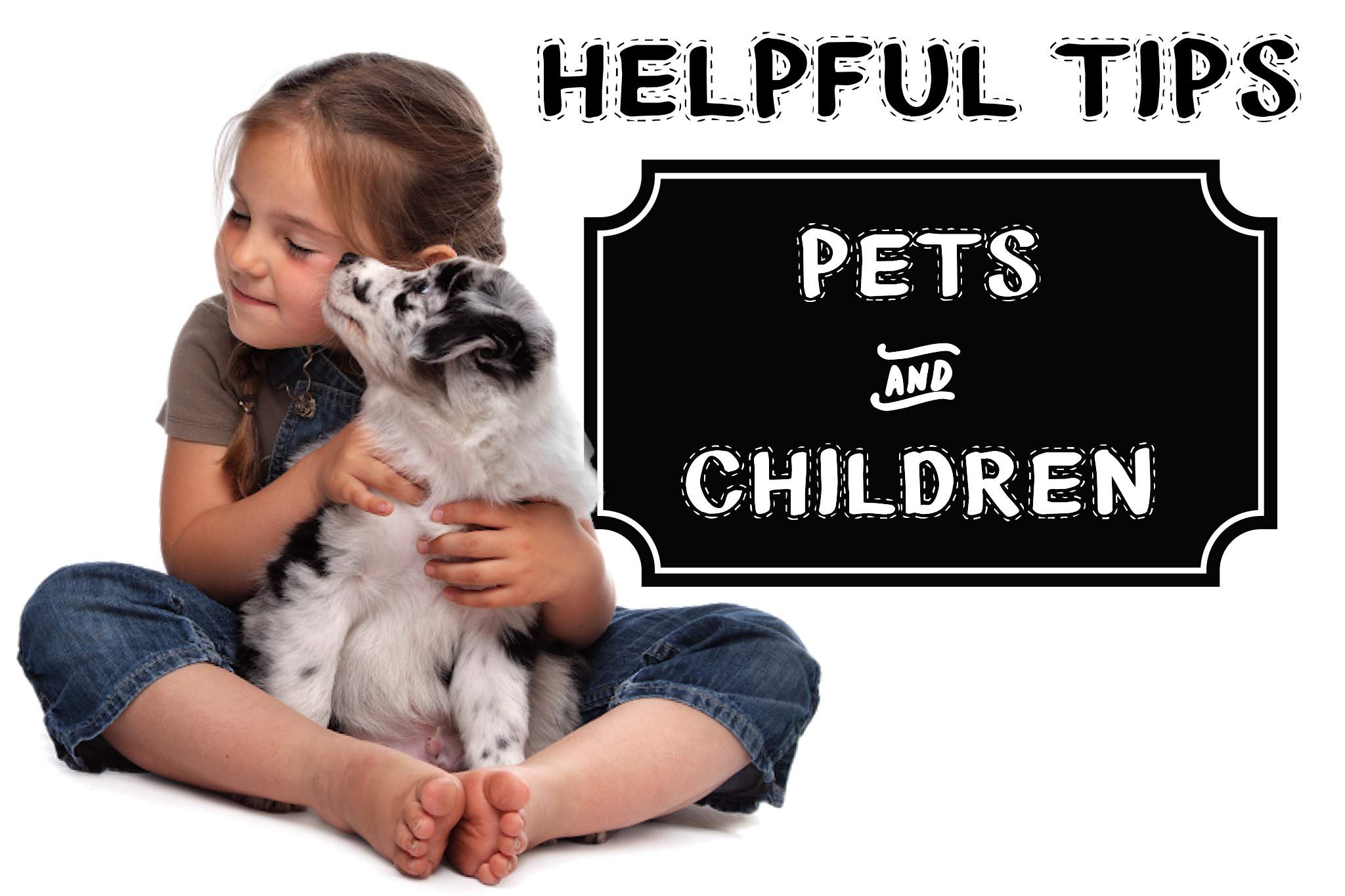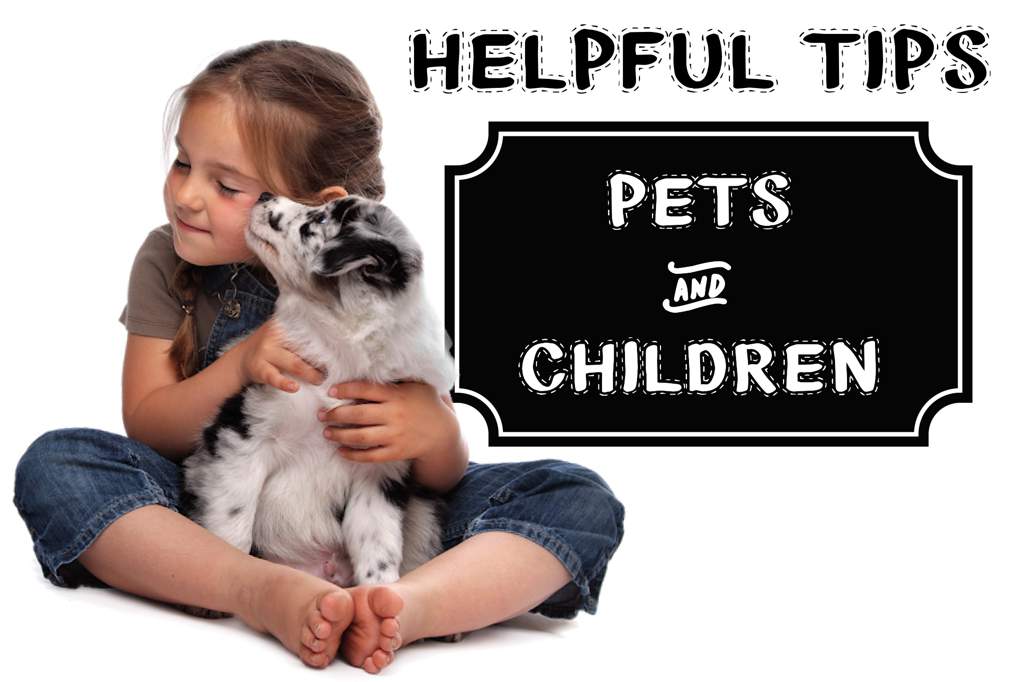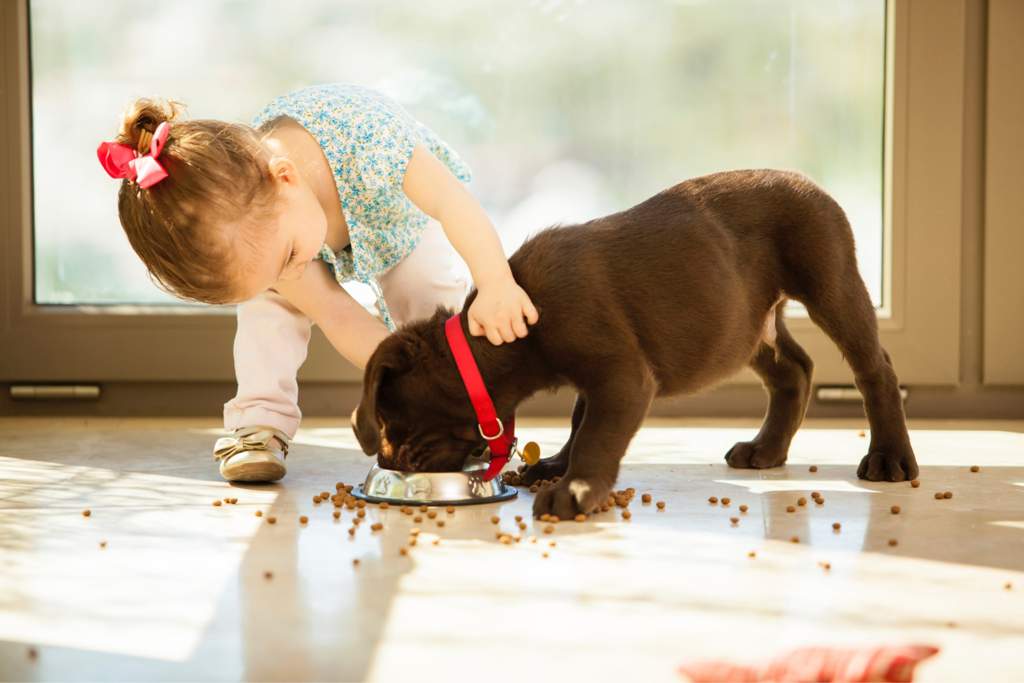
For original article click here
┌──────⋆⋅ :feet: ⋅⋆ ──────┐
Helpful Tips
└──────⋆⋅ :baby: ⋅⋆ ──────┘

—──⋆⋅ :feet: ⋅⋆ ──—
Swiss here to bring some helpful tips this week about introducing your children and pets, a process that can be very daunting at first. With these tips you should have a good idea how to make the transition smoothly.
—──⋆⋅ :dog: ⋅⋆ ──—
:eyes: ° ┄───╮
Supervision
╰───┄ ° :mag_right:

You should never leave your kids alone with a new pet; supervision is crucial. Cats and especially kittens are notorious for their rough playing. They easily will scratch and bite an unknowing child they think is trying to play with them. Dogs on the other hand really need to have positive training to learn proper behavior as they grow. You’ll want to teach your child how to properly approach them and watch for any signs to stop or leave them be. Teaching your child how to pet an animal is very important and can’t be stressed enough. Very young children (under 5) should always be monitored with the new pet while an older child should only need to prove they can respect and properly pet them.
:hourglass_flowing_sand: ° ┄───╮
Adjustments
╰───┄ ° :hourglass:

Put yourself in your new pet’s shoes and see the world from their eyes. This is all very scary, they are in a completely new environment and atmosphere. It’s important to give time for them to become comfortable, and the over excitement from kids may cause them more stress. Cats might be inclined to hide away, this is normal and you should let them be until they are ready to come out on their own. This is a great chance to teach your children patience to respect them while they adjust. If you bring a puppy home they might thrive off the attention and enjoy the excitement, just keep eyes so neither party gets hurt. An older dog can be tricky and it’s best to always keep an eye to gauge their character. They may need additional training to understand the house rules, and you’ll wanna see how they react with kids and adults individually.
:muscle: ° ┄───╮
Helping
╰───┄ ° :raised_hands:

Getting a family pet is a great way to get your family involved and help out. This golden opportunity to teach kids responsibility cannot be passed on even if it’s only small things. Consider what’s in their realistic ability to do, and go from there. Some basic things they can do to help would be putting food or water into the dishes or maybe helping when you change the bedding. There may be other small things they can help with be creative, hopefully, the pet will learn to trust them through the help. Something to remember is to avoid having them deal with any accidents whether it’s from a cat or a dog, any animal feces has the risk of carrying parasites that you don’t want to change your kids catching. So pooper scooping and litter box cleanup should, unfortunately, stick solely to you or much older kids.
° ┄───╮
Rules
╰───┄ ° :book:

Everyone needs rules, the pet, and the kids. Before bringing home a pet make sure to think of how you want things set up. Determine where they’ll eat, sleep, and be using the bathroom. Consider how you’ll pet-proof your home for them and the possibilities that can happen. Cats will climb, scratch, and investigate your home top to bottom. Meanwhile, dogs will have accidents and chew on various clothes or objects they find. Teaching children to ask and wait to play with the animal will be beneficial; patience can never be stressed enough. You can also always observe things to make sure the playing isn’t too rough for the pet or child. A big rule to remember is to never bother a sleeping pet.
:feet: ° ┄───╮
Commitment
╰───┄ ° :ring:

There are too many times that pets brought home end up returned or abandoned because they just weren’t a good fit. So how do you avoid this? Research. Taking the time to read about the pet you’re interested in and if they are a good fit for your dynamic. This is a perfect opportunity to involve the kids, not only will they learn more about the animal but you can get their insights. You can see how willing they are to be involved and respect the animal. Stress how long the pet will live and that this is a commitment you all are agreeing to, that you’ll all do your best to care for them and make them happy.
—──⋆⋅ :baby: ⋅⋆ ──—
Featured in the Newspaper HERE
—─────⋆⋅ :feet: ⋅⋆ ─────—


:warning: DISCLAIMER :warning:
Please be aware not all advice will be helpful for your situation. There’s never a one shoe fits all, each animal can be so different from the next. If you try different methods and find yourself struggling, the best thing to do is your own research, contact an animal trainer, or communicate with your vet.
╭┈┈┈┈┈┈┈┈┈┈┈┈┈┈╮
Introducing New Pets to Old Pets
“Specific tips for introducing certain animals to each other and general tips that should be used during the new meeting between any pets!”
╰┈┈┈┈┈┈┈┈┈┈┈┈┈┈╯


























